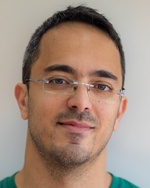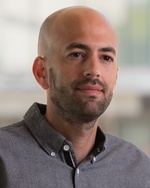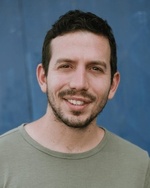About the Authors

Gil Cohen
Assistant professor
Department of Computer Science
Tel Aviv University
Tel Aviv, Israel
gil[ta]tauex[td]tau[td]ac[td]il
https://www.gilcohen.org
Assistant professor
Department of Computer Science
Tel Aviv University
Tel Aviv, Israel
gil[ta]tauex[td]tau[td]ac[td]il
https://www.gilcohen.org
Gil Cohen has been a faculty member at the school of computer science in Tel Aviv University since 2018. He completed his Ph.D. under the guidance of Ran Raz at the Weizmann Institute of Science in 2015. He then proceeded to postdoctoral positions at Caltech and Princeton University, hosted by Leonard Schulman and Thomas Vidick at Caltech, and by Mark Braverman at Princeton. His research focuses on pseudorandomness, derandomization, and explicit constructions.

Dean Doron
Assistant professor
Department of Computer Science
Ben Gurion University of the Negev
Beer Sheva, Israel
deand[ta]bgu[td]ac[td]il
https://www.cs.bgu.ac.il/~deand
Assistant professor
Department of Computer Science
Ben Gurion University of the Negev
Beer Sheva, Israel
deand[ta]bgu[td]ac[td]il
https://www.cs.bgu.ac.il/~deand
Dean Doron is an assistant professor at the Computer Science Department at Ben Gurion University of the Negev. He received his B.Sc. from the Technion, and spent his graduate studies at Tel Aviv University under the supervision of Amnon Ta-Shma. After receiving his Ph.D. in 2018, he spent a year as a postdoc at UT Austin hosted by Dana Moshkovitz and David Zuckerman, and two years as a Motwani postdoc at Stanford. He is interested in computational complexity theory, randomness in computing, coding theory, and also in beautiful hikes and good food.

Shahar Samocha
Software engineer
StarkWare Industries Ltd
shahar.samocha[ta]gmail[td]com
Software engineer
StarkWare Industries Ltd
shahar.samocha[ta]gmail[td]com
Shahar Samocha is a software engineer and researcher in cryptography and blockchain.
He received his M.Sc. degree from Tel Aviv University under the supervision of Gil Cohen, where his research mainly focused on interactive error-correcting codes.
